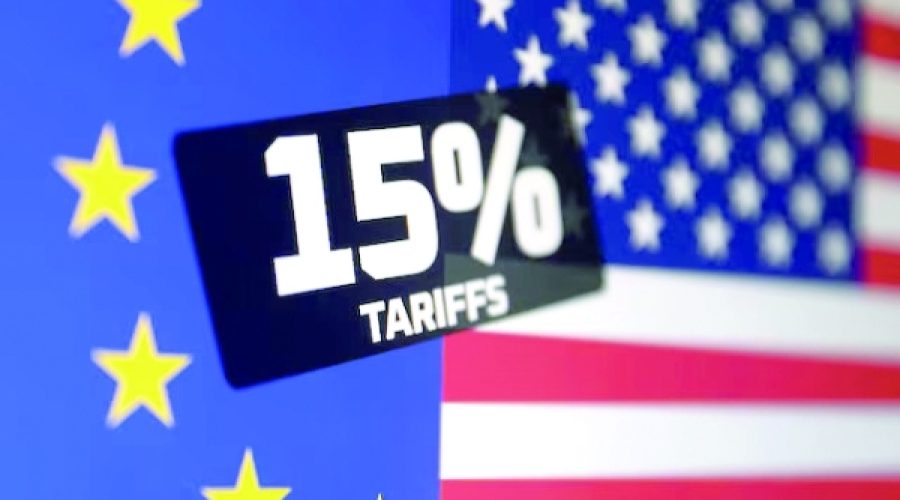چارچوب تجاری ایالات متحده و اتحادیه اروپا نهایی شد: کاهش تعرفه خودرو چه معنایی برای کسب و کار و سرمایه گذاری شما دارد
واشنگتن: ایالات متحده و اتحادیه اروپا یک توافقنامه تجاری چارچوب را که ماه گذشته اعلام شد، رسمی کردند که شامل تعرفه 15% ایالات متحده بر اکثر واردات اتحادیه اروپا، از جمله خودرو، دارو، نیمه هادیها و الوار است.
در یک بیانیه مشترک سه و نیم صفحهای، هر دو طرف تعهدات کلیدی خود را تشریح کردند. اتحادیه اروپا متعهد شد که تعرفههای تمام کالاهای صنعتی ایالات متحده را حذف کند و دسترسی ترجیحی به بازار طیف وسیعی از محصولات دریایی و کشاورزی ایالات متحده را فراهم کند.
ایالات متحده موافقت کرد که تعرفههای فعلی ۲۷.۵۱TP3T خود بر خودروها و قطعات خودرو را به محض معرفی قوانین لازم توسط اتحادیه اروپا برای اجرای کاهش تعرفهها بر صادرات ایالات متحده، کاهش دهد. یک مقام ارشد دولت ایالات متحده اظهار داشت که خودروسازان اروپایی میتوانند ظرف «چند هفته آینده» شاهد کاهش تعرفهها باشند. این توافق ابتدا توسط دونالد ترامپ، رئیس جمهور ایالات متحده، و اورسولا فون در لاین، رئیس کمیسیون اروپا، در ۲۷ ژوئیه در زمین گلف ترامپ در ترنبری، اسکاتلند اعلام شد. این پتانسیل وجود دارد که این توافق به مرور زمان گسترش یابد و بخشهای بیشتری را در بر بگیرد و دسترسی به بازار را افزایش دهد.
در این بیانیه مشترک تصریح شده است که کاهش تعرفههای ایالات متحده بر خودروها و قطعات خودرو از اولین روز ماهی که اتحادیه اروپا قانون خود را تصویب میکند، اعمال خواهد شد. علاوه بر این، ایالات متحده از اول سپتامبر فقط تعرفههای کشور کامله الوداد را بر روی هواپیماها، قطعات، داروها، پیشسازهای شیمیایی و منابع طبیعی کمیاب مانند چوب پنبه اتحادیه اروپا اعمال خواهد کرد.
اتحادیه اروپا تعهد خود را برای خرید ۱TP4T750 میلیارد دلار گاز طبیعی مایع (LNG)، نفت و محصولات انرژی هستهای از ایالات متحده، به همراه ۱TP4T40 میلیارد دلار تراشه هوش مصنوعی ساخت ایالات متحده، مجدداً تأیید کرد. علاوه بر این، اتحادیه اروپا قصد دارد تا سال ۲۰۲۸، ۱TP4T600 میلیارد دلار در بخشهای استراتژیک ایالات متحده سرمایهگذاری کند.
هر دو طرف متعهد شدند که با «موانع تجاری دیجیتال ناموجه» مبارزه کنند و اتحادیه اروپا موافقت کرد که هزینههای استفاده از شبکه را اعمال نکند. آنها همچنین متعهد شدند که در مورد قوانین مبدا مذاکره کنند تا اطمینان حاصل شود که مزایای تجاری در درجه اول به دو شریک تعلق میگیرد و همچنین در مدیریت بازار فولاد و آلومینیوم با حفظ زنجیرههای تأمین همکاری کنند.
— رویترز
تحلیل ویژه از عمانت | بازار عمان را کشف کنید
چارچوب توافق تجاری ایالات متحده و اتحادیه اروپا ارائه میدهد فرصتها و ریسکهای رقابتی برای کسبوکارهای عمان، بهویژه آنهایی که در فعالیتهای صادرات و صادرات مجدد فعالیت دارند مربوط به کالاهای صنعتی و کالاهایی که تحت تأثیر تعرفهها قرار دارند. سرمایهگذاران هوشمند در عمان باید نظارت بر تغییرات در زنجیرههای تأمین جهانی و بهرهگیری از موقعیت استراتژیک عمان برای بهرهبرداری از جریانهای تجاری جدید و شکافهای بالقوه ایجاد شده توسط تنظیمات تعرفهها بین این اقتصادهای بزرگ. این محیط بر اهمیت ... تأکید میکند. متنوعسازی بازارهای صادراتی و افزایش تولید با ارزش افزوده برای حفظ انعطافپذیری در بحبوحه تحولات پویای تجارت بینالمللی.



